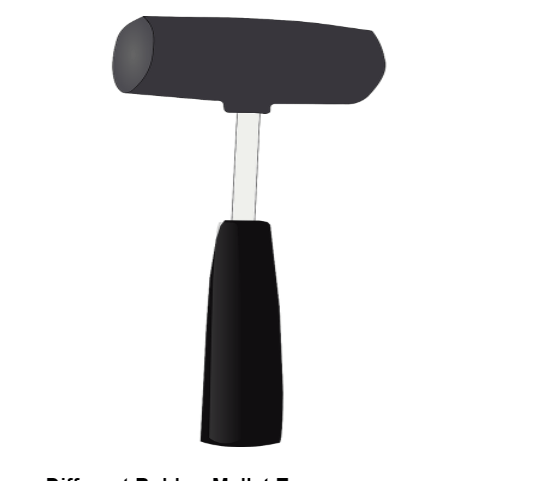It is easy to say that you need a certain type of tool but there is a lot more that goes into the process than you realize. If you aren’t much of a DIYer, picking out the right tools becomes part of the battle.
If you want to add a versatile tool to your repertoire, invest in a few rubber mallets to make your toolbox more versatile. The key is picking out the right type of mallet for the job.
Different Rubber Mallet Types
Before you go running out to grab a rubber mallet for your next home improvement project, know that there are different types of rubber mallets to choose from. Each has its own specific uses and purposes, so don’t go grabbing the first one you see without thinking it through.
Solid rubber. The most common type of rubber mallet is the solid rubber mallet. It is one rubber piece for the head and comes in colors like white, beige, gray, and black. This type of mallet can be used for the broadest range of applications, just make sure that you choose the right color if you don’t want to leave marks behind. Check out this site for a great array of rubber mallets.
Rubber pads. This type of rubber mallet is a little bit different. Instead of a predominantly rubber head attached to a handle, you have a metal head that has rubber pads attached to each face. These are a bit heavier and apply more force than your common rubber mallet.

Be Aware of Wooden Mallets
If you think that all mallets are created equally, think again. Not only are there two different types of rubber mallets, but there are also wooden mallets. These have a very specific use, typically in carpentry or woodworking. They are especially good for assembling dovetail joints, hammering chisels or dowels, and driving joints together.
Wooden mallets provide more control and won’t do damage to the wood. For smaller nails, a wooden mallet can get the job done. But for any other purpose, you are probably going to do damage to not only the surface in question but the mallet as well.
Tips for Buying Rubber Mallets
Because not every mallet has been created equally, a few tips go a long way when it comes time to buy one. Whether you are replacing your current rubber mallet or need to make an addition to your toolbox, picking the right one is key. While it wouldn’t hurt to have an additional mallet, picking the wrong one means another trip to the home improvement store that could have otherwise been avoided.
Make sure that you pay attention to the weight ratings when picking out a rubber mallet. They start as small as eight ounces and get to be as heavy as 32 ounces, if not slightly heavier. For most DIY work around the house or workshop, you’re going to be looking for a mallet in the 12-16 ounce range.
Don’t just assume that a dead-blow hammer will work equally as well as a rubber mallet. These are typically made of hard plastic and can work in place of a rubber mallet. Just do your research before you start using the dead-blow hammer around the house.
Finally, if you only want to get one mallet but want to get greater versatility out of it, a double-faced mallet is the one to look for. You get one side that has the soft rubber you have grown accustomed to. The other side, however, is a hard, acetate face that is meant for heavy-duty applications. You get the best of both worlds in one hammer.





























